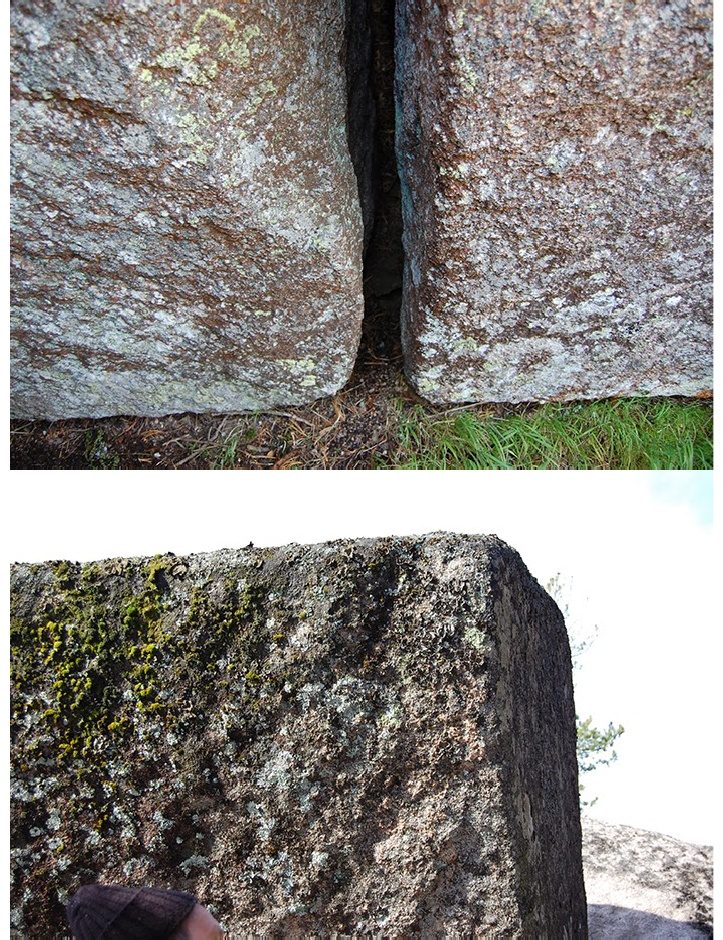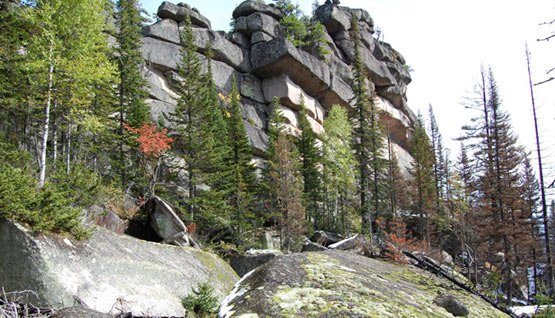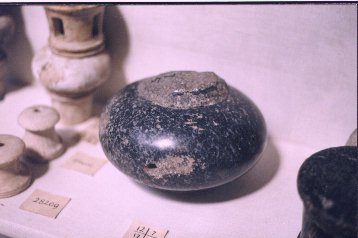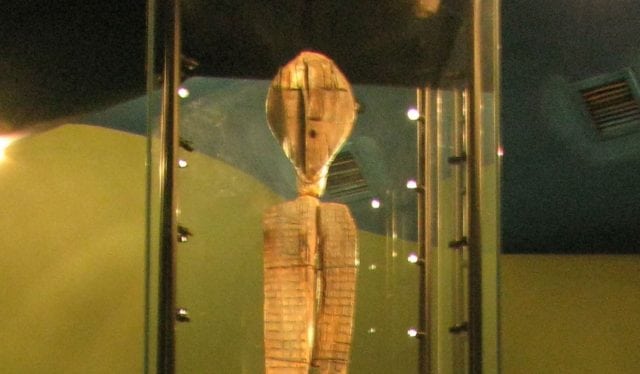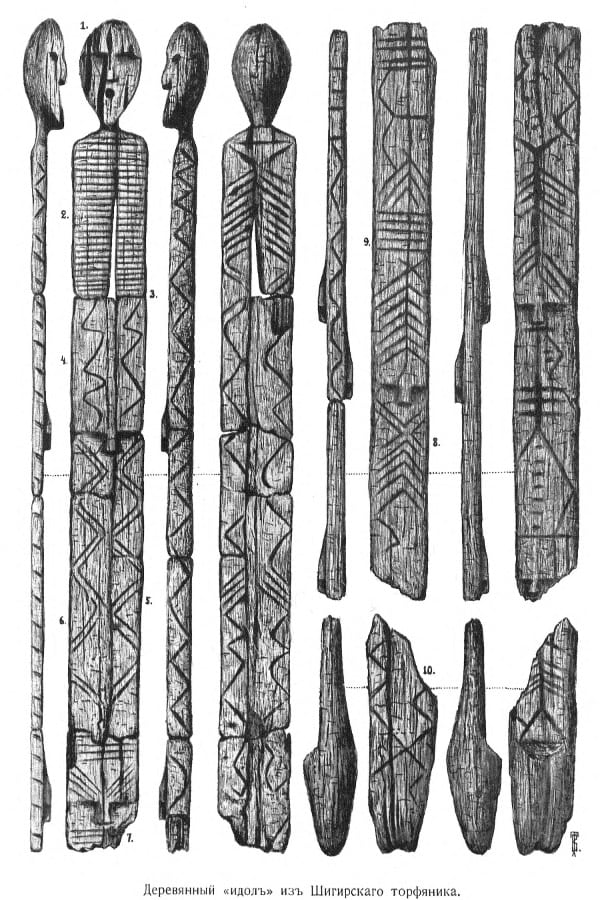Dotini
(Banned)
- 15,742

- Seattle
- CR80_Shifty
.

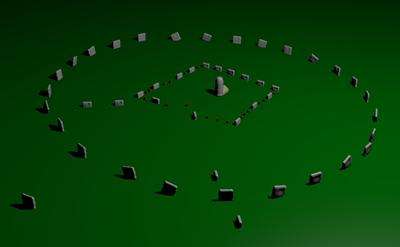
Computer model of findings at Avebury. Credit: University of Southampton
Archaeologists from the universities of Leicester and Southampton have found a striking and apparently unique square monument beneath the world-famous Avebury stone circle in Wiltshire.
Read more at: https://phys.org/news/2017-06-secret-square-beneath-world-famous-avebury.html#jCp
The UNESCO World Heritage Site, cared for by the National Trust, was built over several hundred years in the third millennium BC and contains three stone circles – including the largest stone circle in Europe which is 330m across and originally comprised around 100 huge standing stones.
A research team used a combination of soil resistance survey and Ground-Penetrating Radar to investigate the stone circle. Their work was funded by the Arts and Humanities Research Council (AHRC) and supported by the National Trust, as well as archaeologists from the University of Cambridge and Allen Environmental Archaeology.
Dr Mark Gillings, Academic Director and Reader in Archaeology at the University of Leicester, said: "Our research has revealed previously unknown megaliths inside the world-famous Avebury stone circle. We have detected and mapped a series of prehistoric standing stones that were subsequently hidden and buried, along with the positions of others likely destroyed during the 17th and 18th centuries. Together, these reveal a striking and apparently unique square megalithic monument within the Avebury circles that has the potential to be one of the very earliest structures on this remarkable site."
Avebury has been the subject of considerable archaeological interest since the 17th century. The discovery of new megaliths inside the monument was therefore a great surprise, pointing to the need for further archaeological investigations of this kind at the site.

Soil resistance survey conducted at Avebury. Credit: University of Southampton
The survey took place inside the Southern Inner Circle, contained within the bank and ditch, and colossal Outer Stone Circle of the Avebury henge. Excavations here by the archaeologist and marmalade magnate Alexander Keiller in 1939 demonstrated the existence of a curious angular setting of small standing stones set close to a single huge upright known since the 18th century as the Obelisk. Unfortunately, the outbreak of war left this feature only partially investigated.
Dr Joshua Pollard, from the University of Southampton, said: "Our careful programme of geophysical survey has finally completed the work begun by Keiller. It has shown the line of stones he identified was one side of a square of megaliths about 30m across and enclosing the Obelisk. Also visible are short lines of former standing stones radiating from this square and connecting with the Southern Inner Circle. Megalithic circles are well known from the time when Avebury was built during the late Neolithic (3rd millennium BC), but square megalithic settings of this kind are highly unusual."
Dr Nick Snashall, National Trust archaeologist at Avebury, said: "This discovery has been almost 80 years in the making but it's been well worth waiting for. The completion of the work first started by Keiller in the 1930s has revealed an entirely new type of monument at the heart of the world's largest prehistoric stone circle, using techniques he never dreamt of. And goes to show how much more is still to be revealed at Avebury if we ask the right questions."
The archaeologists who undertook the work think the construction of the square megalithic setting might have commemorated and monumentalised the location of an early Neolithic house – perhaps part of a founding settlement – subsequently used as the centre point of the Southern Inner Circle. At the time of excavation in 1939 the house was erroneously considered by Keiller to be a medieval cart shed.
If proved correct, it may help understand the beginnings of the remarkable Avebury monument complex, and help explain why it was built where it was.


Computer model of findings at Avebury. Credit: University of Southampton
Archaeologists from the universities of Leicester and Southampton have found a striking and apparently unique square monument beneath the world-famous Avebury stone circle in Wiltshire.
Read more at: https://phys.org/news/2017-06-secret-square-beneath-world-famous-avebury.html#jCp
The UNESCO World Heritage Site, cared for by the National Trust, was built over several hundred years in the third millennium BC and contains three stone circles – including the largest stone circle in Europe which is 330m across and originally comprised around 100 huge standing stones.
A research team used a combination of soil resistance survey and Ground-Penetrating Radar to investigate the stone circle. Their work was funded by the Arts and Humanities Research Council (AHRC) and supported by the National Trust, as well as archaeologists from the University of Cambridge and Allen Environmental Archaeology.
Dr Mark Gillings, Academic Director and Reader in Archaeology at the University of Leicester, said: "Our research has revealed previously unknown megaliths inside the world-famous Avebury stone circle. We have detected and mapped a series of prehistoric standing stones that were subsequently hidden and buried, along with the positions of others likely destroyed during the 17th and 18th centuries. Together, these reveal a striking and apparently unique square megalithic monument within the Avebury circles that has the potential to be one of the very earliest structures on this remarkable site."
Avebury has been the subject of considerable archaeological interest since the 17th century. The discovery of new megaliths inside the monument was therefore a great surprise, pointing to the need for further archaeological investigations of this kind at the site.

Soil resistance survey conducted at Avebury. Credit: University of Southampton
The survey took place inside the Southern Inner Circle, contained within the bank and ditch, and colossal Outer Stone Circle of the Avebury henge. Excavations here by the archaeologist and marmalade magnate Alexander Keiller in 1939 demonstrated the existence of a curious angular setting of small standing stones set close to a single huge upright known since the 18th century as the Obelisk. Unfortunately, the outbreak of war left this feature only partially investigated.
Dr Joshua Pollard, from the University of Southampton, said: "Our careful programme of geophysical survey has finally completed the work begun by Keiller. It has shown the line of stones he identified was one side of a square of megaliths about 30m across and enclosing the Obelisk. Also visible are short lines of former standing stones radiating from this square and connecting with the Southern Inner Circle. Megalithic circles are well known from the time when Avebury was built during the late Neolithic (3rd millennium BC), but square megalithic settings of this kind are highly unusual."
Dr Nick Snashall, National Trust archaeologist at Avebury, said: "This discovery has been almost 80 years in the making but it's been well worth waiting for. The completion of the work first started by Keiller in the 1930s has revealed an entirely new type of monument at the heart of the world's largest prehistoric stone circle, using techniques he never dreamt of. And goes to show how much more is still to be revealed at Avebury if we ask the right questions."
The archaeologists who undertook the work think the construction of the square megalithic setting might have commemorated and monumentalised the location of an early Neolithic house – perhaps part of a founding settlement – subsequently used as the centre point of the Southern Inner Circle. At the time of excavation in 1939 the house was erroneously considered by Keiller to be a medieval cart shed.
If proved correct, it may help understand the beginnings of the remarkable Avebury monument complex, and help explain why it was built where it was.
Last edited:

